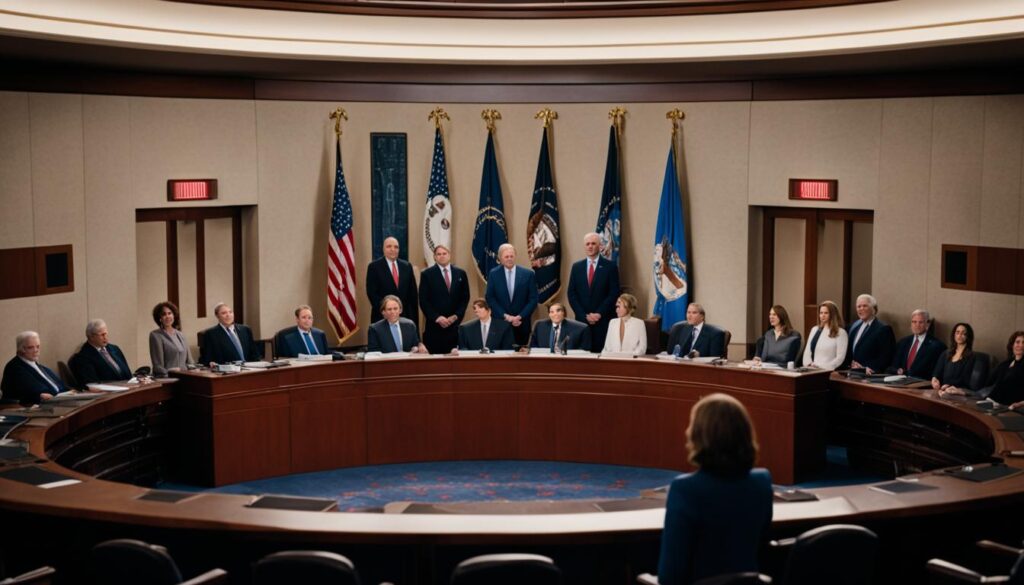In American political history, there’s a rare event that stands out. The Senate, known for its legislative role, once took a unique step. They selected a vice president, showing the complex process of electing one.
In 1836, the Senate found itself in this spotlight. Richard M. Johnson, a former Democratic senator from Kentucky, was close to becoming vice president. He was just one electoral vote short in a field of four candidates.
This situation brought out a little-known clause in the Constitution, the Twelfth Amendment. This amendment explains how to handle presidential succession. It says the Senate must choose between the top two electoral vote winners if there’s a tie.
The Senate must have at least two-thirds of its members vote in such cases. This process is part of the US vice presidential election’s complexity.
Key Takeaways
- The Senate has only once selected a vice president in U.S. history
- This unique event occurred during the 1836 election
- Richard M. Johnson fell one electoral vote short of a majority
- The Twelfth Amendment dictates Senate involvement in deadlocked contests
- At least two-thirds of senators must vote in such cases
- This event highlights the complexities of the US vice presidential election process
The Constitutional Framework for Vice Presidential Selection
The Constitution’s framers set up the vice presidency as part of the Electoral College system. Initially, electors voted for two people for president. The person who came in second place became vice president. This changed with the Twelfth Amendment in 1804.

The Twelfth Amendment allowed electors to vote separately for president and vice president. This change has shaped how we pick our leaders today. If no one gets a majority in the Electoral College, the Senate takes over. They choose between the top two candidates.
The Twenty-Fifth Amendment, from 1967, brought more rules. It lets the president name a new vice president if there’s a vacancy. Both the House and Senate must agree on this choice. This shows how our government has checks and balances.
These amendments have changed how we pick our vice president. They make sure the Senate confirmation process is key in filling this important role. The vice presidency has grown from just being the runner-up to a vital part of the executive branch.
The Unique Election of 1836: Senate Selected Vice President
The US vice presidential election of 1836 was a historic event. Martin Van Buren won the presidency, but his running mate, Richard M. Johnson, lost by one electoral vote. This led to a rare move by Congress in choosing a vice president.
Richard M. Johnson was a key figure in American politics. He was in Congress for 30 years and was friends with President Andrew Jackson. His campaign focused on his victory over Tecumseh in the War of 1812, which raised some doubts. Johnson’s personal life, including his relationship with a slave, also caused controversy.
The 1836 election showed how politics and elections are closely linked. On February 8, 1837, the Senate decided on the vice president. They voted 33 to 16 for Johnson, showing how the Senate can step in during elections.

Leave a Reply